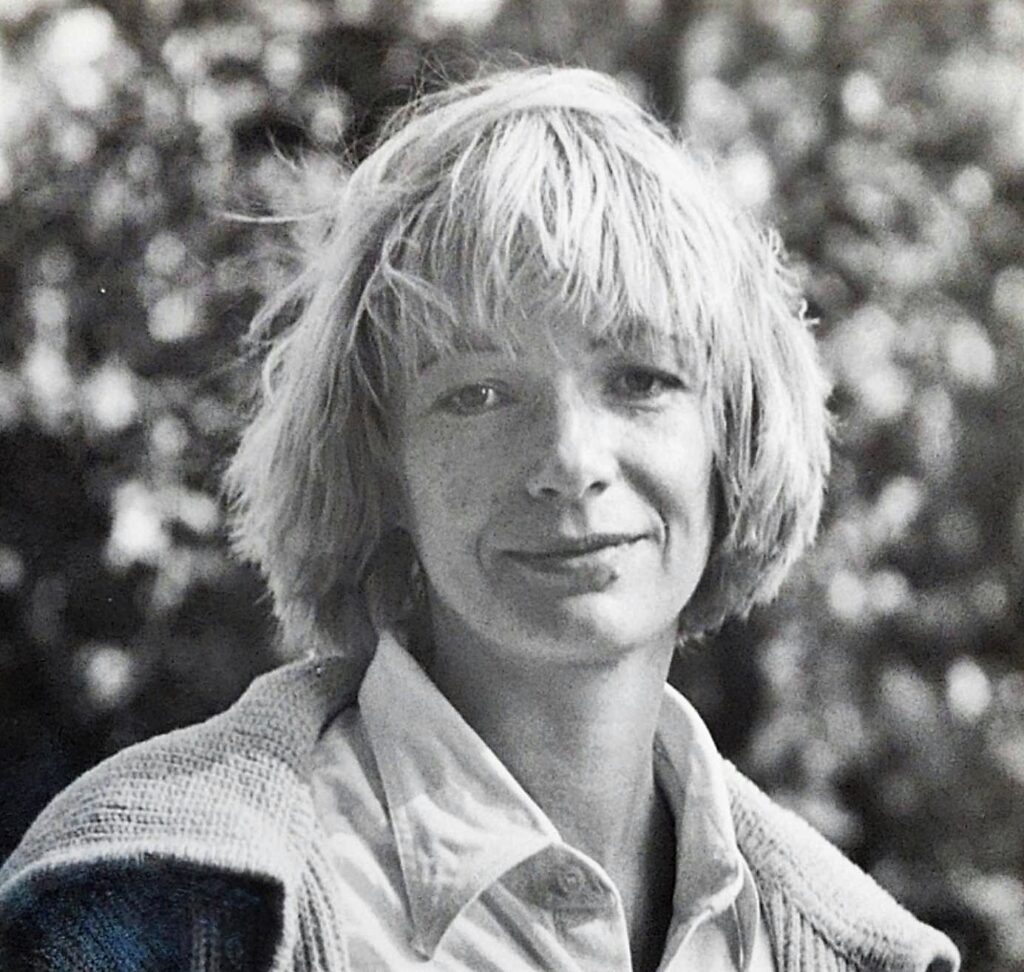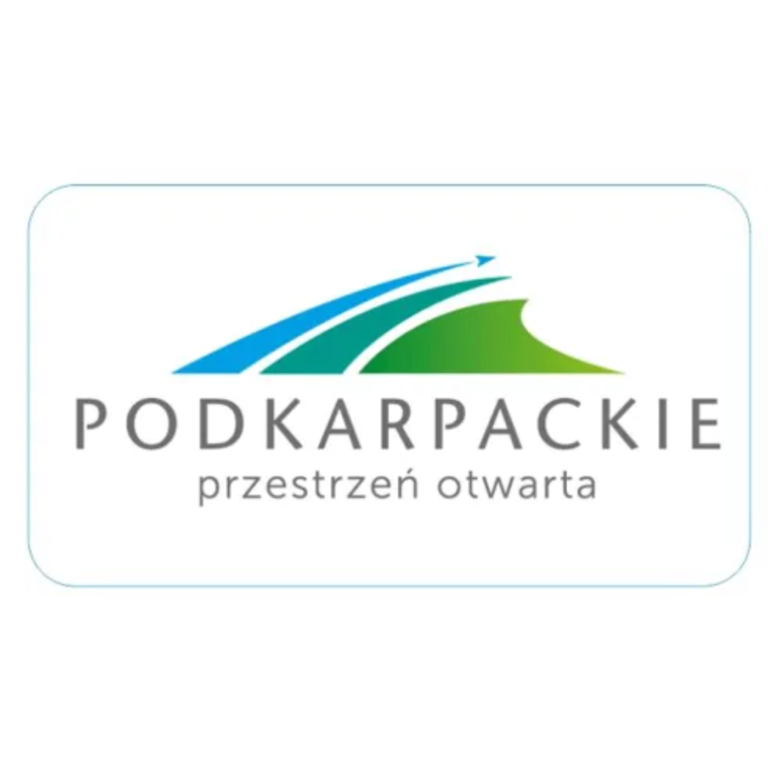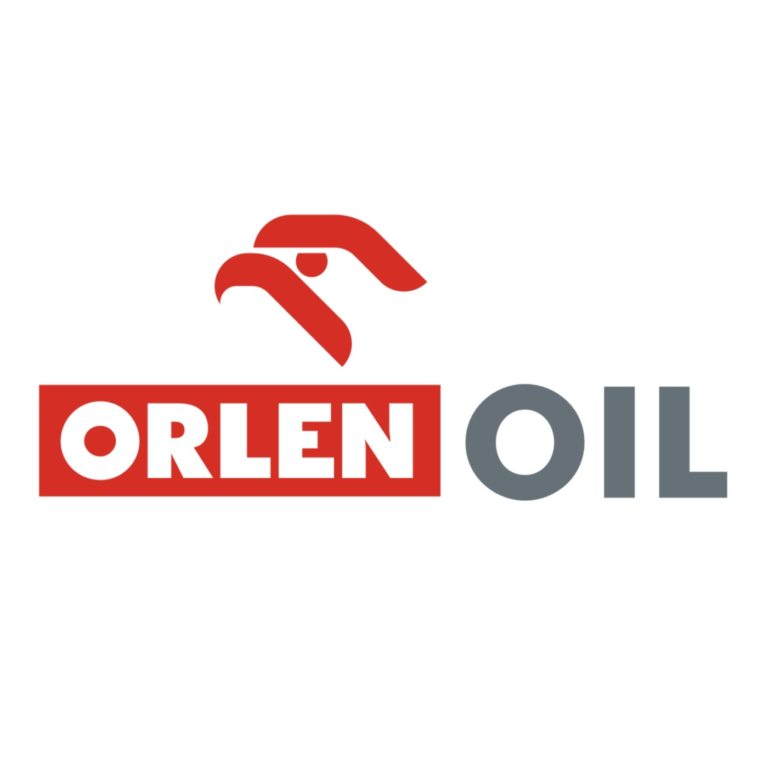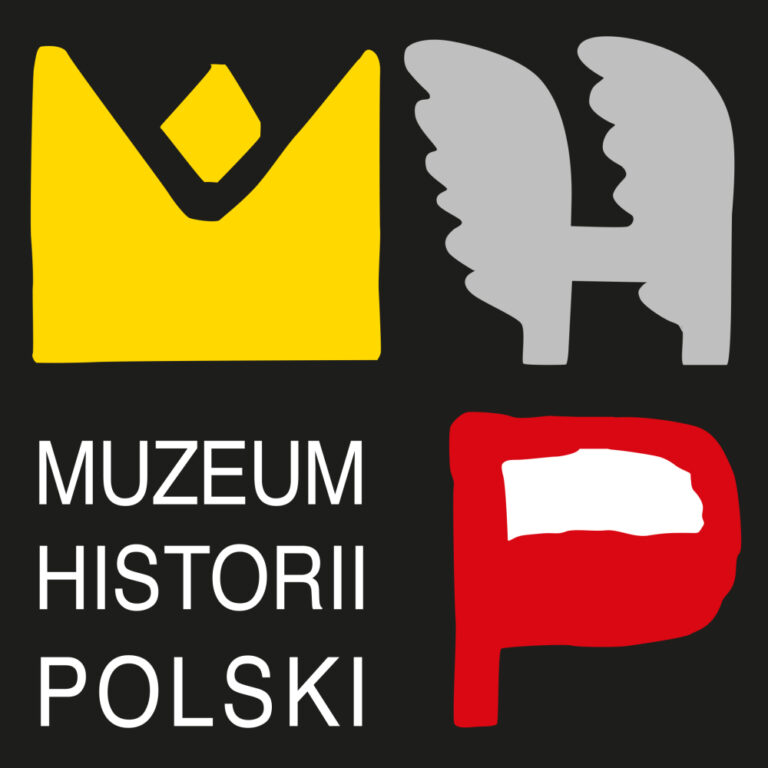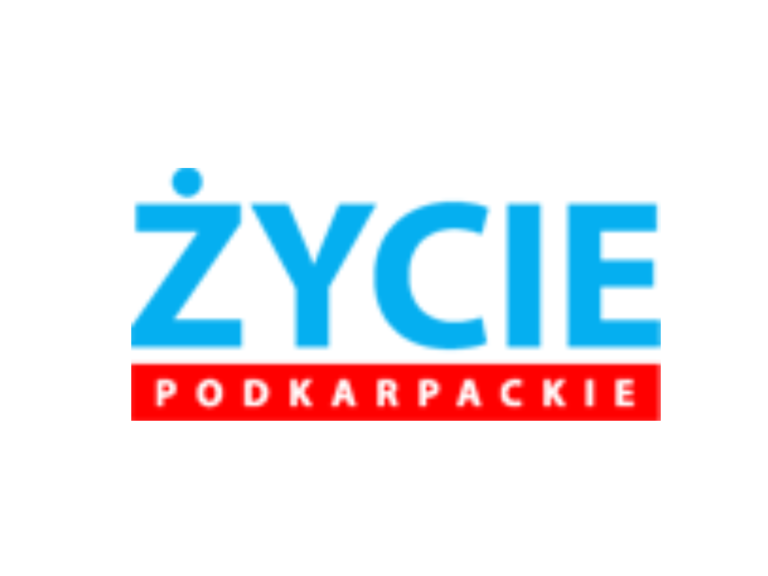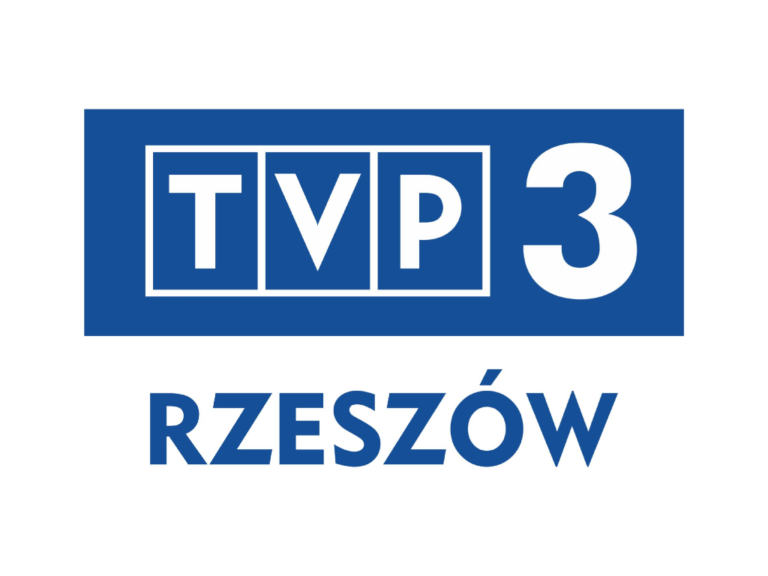The interview took place on 24.09.2022 at the Libera cafe in Przemyśl.
AB: Hello, as I mentioned earlier, the Przemyśl Cultural Society is participating in a project subsidized by the Museum of Polish History. The main goal is to create an Internet portal that will collect memories, texts, conversations, as well as archival publications and simply mementos of the old days.
GN: There is also a beautiful archive that I have somewhere, photos taken by Wladyslaw Szulc from Sanok, a photographer, given to me by his daughter, which I need to find. There is also an important publication entitled: "25 x Slonne", excellently done by Tadeusz Nuckowski, and Nuckowski, as you know, worked with "Strych". Edward Robinson, whom I see here in the photo, is an interesting topic for a separate story. Perhaps something like that can be written. It would be good to go the way of small texts. Simply encapsulate each such memory in a single text. I dealt with Edward Robinson personally, because it turned out that he went there to the village of Pralkovce and made an altar in the church there. And there someone put him in the rectory and everyone forgot about him. He sat there for a while, not knowing the Polish language, and did his art. I taught him to ride the bus to my misfortune, because he then came to me almost every day, put himself in the apartment and I had to take care of him. He made a wooden altar, which he donated to the parish, but the parish did not accept it, because it was a very abstract altar. It was at the time of the Man-God-World festival. It is even possible that it was brought by Helen Ganly. The artists from Oxford, who were brought by Helen, were also at the open-air festival in Krasiczyn Castle. At the time, Marek Kuchcinski paid $1 a day per participant at the rectory for our stay, because that was the zloty conversion rate. These artists were very concerned about this and wanted to help us then, seeing what life was like here. They did all sorts of artistic activities and works then. Roger Perkins then made such a man of wood, such a human figure. He wanted to donate it to the museum, but it didn't work out, the museum didn't accept the work. Probably it would have been a problem for them, because Perkins used a not very durable material, wooden planks, not dried out, conservators might not have kept it. Besides, it was a large format of the work. However, let's return to your project.
AB: I wanted to talk about this very movement, the "Attic" and the meetings. How do you recall it, when did it start for you?
GN: Attic meetings began in my apartment and Mark's apartment, actually at his parents' apartment on Matejki Street.
AB: And not in Ostrów near Przemyśl?
GN: No, it's later, first certainly at Mark's parents - Janina and Zbigniew. At my place there was a poetry meeting with poet Barbara Tondos. There are some photos from that meeting, I have to find them. There are no photos from the other one, and everyone kept telling us that we should document what we were doing. We didn't have much of a head for it at the beginning. I was a widow at the time, I had a small child, a job, etc. At Mark's place there was a meeting with the poet Jozef Kurylak, who later turned out to be an agent.
AB: Yes, I know this dramatic story.
GN: Then everything moved to Mark's home in Ostrow.
AB: So there was a lot of interest in continuing the meetings?
GN: That wasn't quite the point. We simply lived in different times then, where everyone met at home. Now, for example, we wouldn't meet here in a cafe, but at home. This Western trend from France, Italy - meeting in restaurants - came to us only recently. Back then we used to meet at home. I hosted huge numbers of people, groups of artists in my own apartment. I had some food, tea and that's how it was done. And it didn't occur to me then that it could be different. Besides, the movement we are talking about now was in contrast to the situation in the country at the time. We were often followed and such meetings could be recorded at the time. I remember, for example, how I constantly had my windows broken in my DeSa, which I ran in Przemyśl at the time. I often sat up until the morning, so that no one would steal the precious goods, and it must be remembered, there were specific times. I did not want to endanger the employees. Very oppressive was the harassment by the secret police, it was terrible, I often got sick then. It was not all that easy, but the habit of meetings survived, they were often held in interesting company. After the meetings moved to Mark in Ostrow, it turned out that the conditions were excellent. The first exhibition, I remember, was a single exhibition, then there were group exhibitions. I even wrote a letter inviting artists and everyone responded. We presented the exhibition in the basement of the Franciscan Fathers in Przemyśl, we had to guard it socially. The fathers gave us access to their space and did not censor anything. There were also some really shocking paintings in the festival exhibitions, such as Janusz Szpyt's, which spoke about people's profanation of Christ's words....
AB: Did no one mind?
GN: No, these exhibitions were positively received by both the Franciscans and the audience, and the artists showed what they wanted. Zygmunt Czyż, a graphic artist from Rzeszow, now deceased, also presented his works. There were also many well-known names in Poland. I joined the movement after my husband's death in 1985. As I mentioned, the first exhibition was strictly Przemyśl-based, then we expanded the selection of artists in accordance with the Przemyśl diocese. The next exhibitions were already guests from abroad, such as Helen Ganly, Edward Robinson, then an important open-air exhibition in Krasiczyn. Here in this 2019 issue of the "Cultural Attic" is the entire calendar... There is Margaret Steel Hunter, a Scotsman, and Professor David Reagan from the United States. A very important name Marek Sapeto, an artist who had his solo exhibition. There is also a joint Cepinski/Kosciuk exhibition.
AB: Yes, from the latter exhibition is a photograph published in this 2019 issue of Attic. Some of the archival material, including photographs just now, has already been partially scanned. We want to make all this available to people.
GN: Yes, as I look through these photographs, I see a very important person - Rev. Partyka. I also see in the photo Magdalena Hniedziewicz, whom we invited to the jury of the festival. Then she became associated with us for a longer period of time and came. A very important art critic. There is also Kaziu Wisniak, who was on the jury. There's also Marysia Witkiewicz, a painter, who I talked about yesterday at my lecture on Przemysl artists. I also see here paintings by Stanislaw Koba, but a collective exhibition. I remember such a story from that exhibition that Jadwiga Sawicka, Koba's partner at the time, brought paintings still wet, painted literally the day before, to the exhibition. We kept an eye on those paintings in the basement, it was a big room. Now I think to myself that it could also have been harassment or some idiot, but someone simply marked these wet paintings with a paint-soaked finger, destroying them. Interesting, here I see later Governor Nemkevich... We in general did not expect that some of us would later become politicians at the provincial or national level.
AB: I don't think anyone expected that. And did you feel the breath of the security forces on your back?
GN: Mostly we knew that they were watching us, that they were following us in their cars and parking at the meeting place. We were so aware. For example, in our Libera venue today, it was its co-owners Beata and Jurek Bonarek who sold independent books during the festival edition. I also carried such books. I also supported the KOR and had my supply channel in Rzeszow while my husband was still alive, who died in 1983. Barbara Tondos and Jerzy Tur - prominent art historians associated with Solidarity - it was from them that I took bags of books to buy. In general, this Przemyśl center was very strong, mentioned in publications about national centers.
AB: The lady has an amazing memory for all these people and events. I've talked to several people and it's different with this memory....
GN: Thank you. And here I see Jack Fedorowicz. I persuaded him personally to sell his works at author meetings. I also had them in my store at the time - a lot of satirical drawings, including one with Walesa. He was very grateful to me for this, because he was also making a living at the time. He even came here to Przemysl during the first elections to support the committees as a thank you. And the other story related to him is that he lived with me for a while during a visit. One of my colleagues asked me at the time how he could expose me in such a way... Tadek Boruta, who has now made such a publication, which may be of interest to you. Artists were involved in graphic design in the printed issues of "Cultural Attic". Miroslaw Kocol did the first issue, followed by Jadwiga Sawicka and Stanislaw Koba. These were very interesting works in terms of graphics. Mirek arranged it all graphically and did the typesetting. The Mikruts were also in the Cultural Attic from the beginning. Kościuk also did the drawings. The art side was important all the time and was done by professionals at a high level. The setting of the exhibition Man - God - World was done by Tadek Nuckowski, one of the most outstanding Przemysl artists. Such great artists as Andrzej Cieszynski participated in the creation of the entire graphic setting. Mariusz Kościuk later moved to Zycie Przemyskie, now Podkarpacki, and became a graphic designer in the editorial office. Artists were drawn to events, open-air workshops by Marta Siennicka, because she lived in Warsaw and knew this environment. It was also possible to establish contacts with foreign countries.
AB: Can you tell us how it was possible to attract people from the West?
GN: They came here probably a little by accident and a little out of curiosity. Foreign artists were able to receive scholarships and subsidies from their foreign institutions for their trip. The independent movement in Poland also had its own budget, and this is how the funds for their arrival were obtained. This was not talked about, but it was. Guests even came from the United States, talking about their education system, among other things. They talked about illiteracy and the fact that American education is not perfect. The topics were serious and there were many great lectures and discussions. Great names came, such as Leszek Moczulski, the Lodz Kaliska group, for example. It was really a great thing that they came here. Among other things, I used to accommodate them at my place. It all just happened like that, a little privately, a little officially, but certainly independently. Marek Kuchcinski had his own house, where he could practically overnight everyone.
AB: Well, yes, these days it could look very different. Artists would stay overnight in hotels, meetings would be held in a conference room or art gallery....
GN: They were actually coming to a wild country. Wild and communist. I remember such an anecdote, how I took Helen Ganly to an open-air workshop organized by Janusz Cywicki, to Slonim. I told her: Helen we are going to the old teachers' center and there will be nightmarish conditions. Helen was not discouraged and went. After about a week we went to my house in Przemyśl by car to get some things. Helen in my house surreptitiously pulled out from the closet bedding pillowcases. I, seeing this, asked why she was taking them. She told me that she would like to coat the bedding in her room in Slonim. To which I said: Helen, after all, there is bedding there! However, it turned out that she poor got a bed there without bedding for that week. But during that time she didn't have the audacity to claim it at the center. The poor thing slept under a blanket at the time, and took to heart my words about the poor conditions... A year later, Helen said that Viney from India would come to the open air, but he had to take a bath every day, he pointed out. And she asked how we do it in this resort, because, after all, there is no hook in the bathroom, so that there is privacy. And for us it was normal, that if someone occupies the bathroom, you just hear and do not go inside. There were such differences of the Western world, which in a rather funny way came out over time. At the first open-air house at Father Bartminski's in Krasiczyn, who was a wonderful man, but that's a separate story, conditions were also poor at the rectory. I remember that there was a room, and in it were bunk beds and blankets. The food, on the other hand, was excellent. After all, after all, the famous Grandma Józia from the TV series Plebania was modeled on the one in the rectory in Krasiczyn precisely! I remember that Janek Jarosz, then a young boy and now the director of the National Museum of the Przemysl Region in Przemyśl, used to go to the airport in Warsaw to pick up people. Once he even picked up one guest, who you could say was his double. However, he was not a pleasant guest, he seemed to take advantage of us a bit. After they got rid of him in Wroclaw, he was even supposed to stay with me for a while. At that time there were quite a few people in my apartment. The Man-God-World festival was taking place at the time, and after the festival almost everyone came to my place. Some guests were washing dishes, others were learning yoga in the hallway, someone was calling Warsaw, someone was crying in another room. Everyone huddled together so much that the would-be guest went to someone else out of fear. At that time I was in charge of the artistic sphere, the guests related to this, while Marek was more in charge of the intellectual sphere together with Jan Musial. They did the paper "Attic". It's interesting that artists from the West tried to tell us that the system we lived in was, in a sense, protective of us. What they meant was that in a free market there are financial problems, especially in securing a pension, for example. These problems already arise in the present day, but at the time we didn't understand this. They also told us about Art Weeks, where art literally went out into the streets of the city, they opened studios to the public, which was something novel for us. This exchange of experience was really interesting and important. There were also, as I remember, art auctions organized later on, and the fundraising was for the Solidarity election campaign. One such auction was held at 10 Market Square in Przemyśl and at the Museum. I ran these auctions, and all the works sold. The prices were not exorbitant, but what mattered was the purpose. At that time people were not accustomed to the value of works. In Krasiczyn Marek Kuchcinski conducted meetings, conferences that continue to this day, by the way, under a different name (Europe of the Carpathians now). We did about 50 art exhibitions at that time, in addition to our daily work. The whole organization took a long time, consisting of writing correspondence, contacting people. Logistics rested primarily with Mark, who at the time had a Toyota car in addition to the house. The security service even gave him the nickname "Toyota."
Interviewed by Alexander Busz

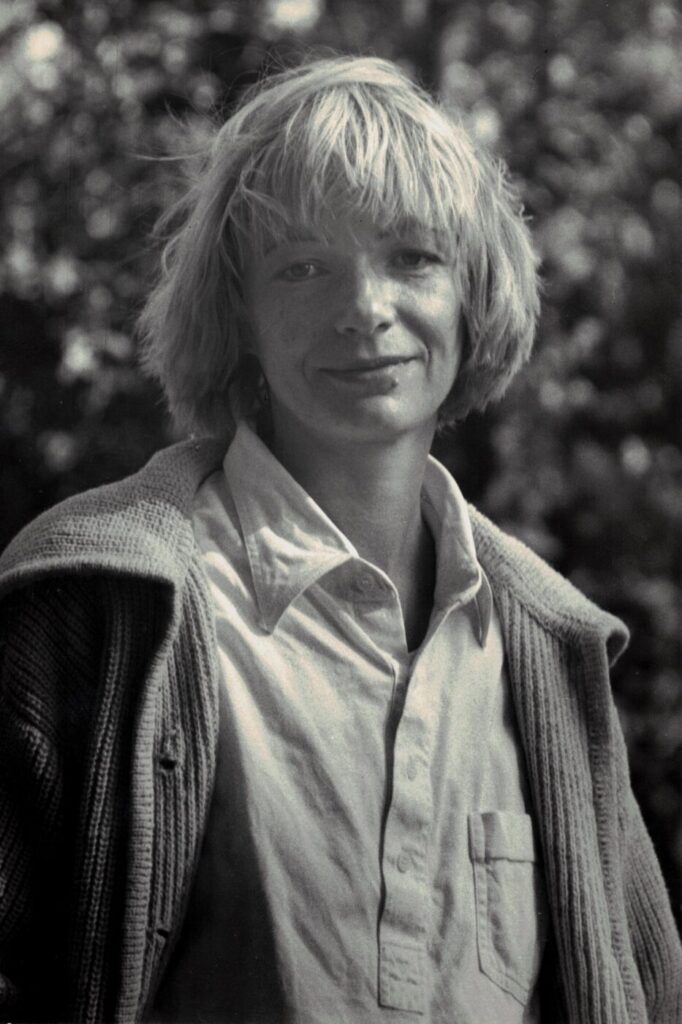


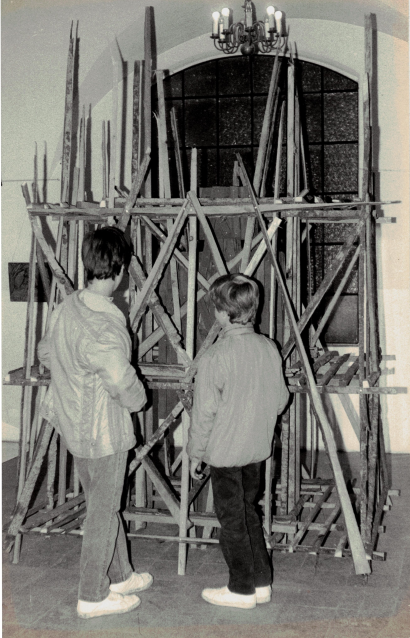
Archival materials provided by Grażyna Niezgoda

